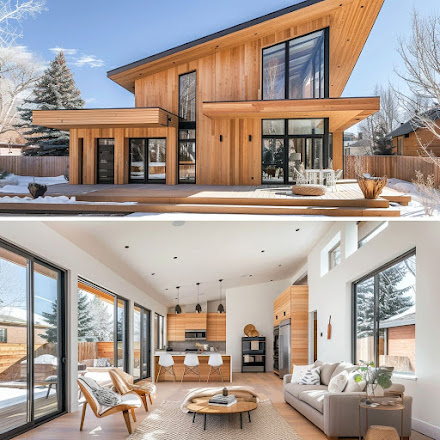Contemporary Interior Design: An Exploration of Trends and Impact
Interior
design has undergone significant transformations over the years, responding to
changes in culture, technology, and societal needs. Contemporary interior
design, which can be described as a dynamic and evolving style, reflects the
current attitudes toward aesthetics, functionality, and comfort. The key
characteristics of contemporary interior design are rooted in minimalism, open
spaces, natural elements, and a focus on sustainable practices. This essay
explores the defining features of contemporary interior design, its evolution,
and the impact it has on our daily lives.
Defining Characteristics of Contemporary Interior Design
1.
Minimalism and Clean Lines
At the heart
of contemporary interior design is the emphasis on simplicity. Minimalism is a
major design principle that advocates for "less is more." In this
context, it involves reducing excess furniture, decor, and ornamentation.
Spaces are often characterized by clean lines, geometric shapes, and neutral
color palettes. The idea is to create open and airy environments that feel both
spacious and uncluttered. Furniture is often sleek, with smooth surfaces and
subtle textures, emphasizing function and form rather than elaborate
decoration.
2.
Open Floor Plans
Contemporary
interiors prioritize openness and flow. Walls are minimized or removed to
create large, multi-purpose spaces that can serve a variety of needs. This
open-plan design encourages greater interaction and connectivity between areas
of the home, such as the living room, kitchen, and dining area. The layout
promotes an easy flow of movement and a sense of freedom, which contrasts with
traditional designs that often compartmentalized spaces.
The Evolution of Contemporary Interior Design
Contemporary
interior design is not a static style but rather a fluid movement that adapts
over time. Its evolution can be traced back to the early 20th century when
modernism began to challenge traditional design conventions. Pioneers like
Ludwig Mies van der Rohe, Le Corbusier, and Frank Lloyd Wright emphasized clean
lines, functional layouts, and an affinity for industrial materials. These
ideals continued to influence contemporary design throughout the mid-century
modern movement, where architects and designers such as Eero Saarinen and
Charles and Ray Eames integrated organic shapes and functional furnishings into
their work.
Conclusion
Contemporary
interior design represents the current cultural moment in both its aesthetic
and its approach to functionality. With its emphasis on minimalism, open
spaces, natural materials, and sustainability, contemporary design reflects the
values and priorities of the modern world. It is a style that adapts to
technological advancements while also promoting a deeper connection to the
environment. As trends continue to evolve, contemporary interior design will
likely remain at the forefront of innovation, shaping how we live, work, and
interact with the spaces around us.
BuyMote E-Shopping Application is One of the Online Shopping App
Now Available on Play Store & App Store (Buymote E-Shopping)
Click Below Link and Install Application: https://buymote.shop/links/0f5993744a9213079a6b53e8
Sponsor Content: #buymote #buymoteeshopping #buymoteonline #buymoteshopping #buymoteapplication"








.jpg)